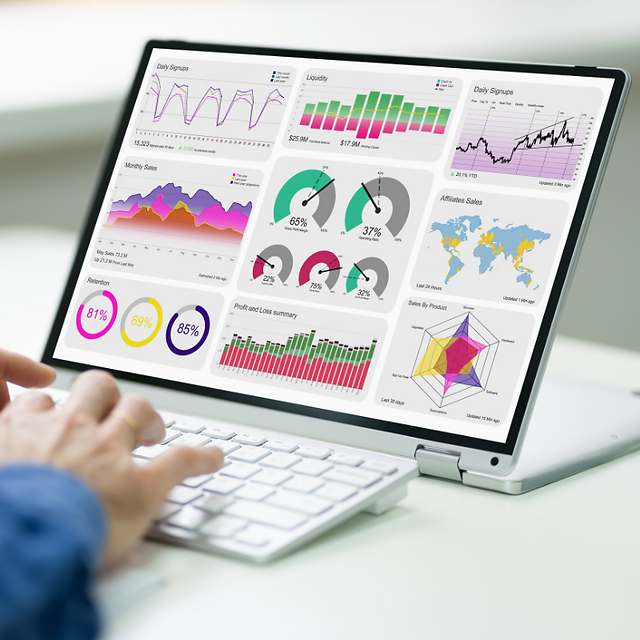In the fast-paced world of digital marketing, efficient and effective client reporting is essential for demonstrating the value of your agency’s services, fostering transparency, and building trust with clients.
However, the process of collecting, analyzing, and presenting data from various marketing channels can be time-consuming and labour-intensive.
This is where automated reports come into play, offering a streamlined solution to elevate client reporting efficiency.
In this blog, we’ll explore the benefits of automated reports and how they can help marketing agencies deliver exceptional results while saving time and resources.
The Challenge of Manual Reporting:
Traditional client reporting often involves manually gathering data from multiple sources, such as Google Analytics, social media platforms, advertising campaigns, and email marketing tools.
This process can be tedious, error-prone, and time-consuming, requiring significant resources to compile, analyze, and format data into comprehensive reports.
Moreover, manual reporting may lead to delays in delivering insights to clients, hindering timely decision-making and action.
The Rise of Automated Reports:
Automated reports offer a solution to the challenges of manual reporting by streamlining the data collection and reporting process.
With automated reporting tools, marketing agencies can connect to various data sources and platforms, pulling real-time data into customized dashboards and generating reports automatically.
This eliminates the need for manual data entry and manipulation, allowing agencies to focus their time and resources on analysis, strategy, and client communication.
Benefits of Automated Reports for Marketing Agencies:
Time Savings: By automating the data collection and reporting process, marketing agencies can save significant time and resources that would otherwise be spent on manual tasks.
This allows teams to allocate more time to strategic activities, such as campaign optimization, client communication, and business development.
- Improved Accuracy: Automated reports reduce the risk of human error associated with manual data entry and manipulation. By pulling data directly from source platforms and generating reports automatically, agencies can ensure accuracy and consistency in their reporting, enhancing credibility and trust with clients.
- Real-Time Insights: Automated reporting tools enable marketing agencies to provide clients with real-time insights into campaign performance, website traffic, lead generation, and other key metrics. This allows clients to make informed decisions and adjustments to their marketing strategies on time, maximizing results and ROI.
- Customization and Flexibility: Automated reporting tools offer flexibility in designing customized dashboards and reports tailored to each client’s unique needs and preferences. Agencies can choose the metrics, KPIs, visualizations, and formatting options that best align with their client’s goals and objectives, providing a personalized and engaging reporting experience.
- Scalability: As marketing agencies grow and onboard new clients, automated reporting tools can scale to accommodate increasing data volume and complexity. These tools offer scalability and efficiency, allowing agencies to manage multiple client accounts and campaigns seamlessly without compromising quality or accuracy.
Implementing Automated Reports:
To implement automated reports effectively, marketing agencies should follow a structured approach:
- Define Client Objectives: Understand the specific goals, KPIs, and reporting requirements of each client to tailor automated reports accordingly.
- Select the Right Tools: Choose automated reporting tools that align with your agency’s needs, budget, and technical capabilities. Popular options include Google Data Studio, Tableau, Databox, and Klipfolio.
- Integrate Data Sources: Connect to relevant data sources and platforms, such as Google Analytics, Facebook Ads, LinkedIn Ads, HubSpot, and Mailchimp, to pull data into automated dashboards.
- Design Customized Dashboards: Design visually appealing and intuitive dashboards that showcase key metrics and insights clearly and concisely. Use charts, graphs, tables, and other visualizations to convey information effectively.
- Set Up Automated Reporting: Configure automated reporting schedules to deliver reports to clients regularly, such as weekly, monthly, or quarterly. Ensure that reports are sent promptly and include actionable insights and recommendations.
- Monitor and Optimize: Continuously monitor automated reports for accuracy, completeness, and relevance. Make adjustments as needed based on client feedback, changes in objectives, or evolving marketing strategies.
Conclusion:
In conclusion, automated reports offer marketing agencies a powerful tool for streamlining client reporting, enhancing efficiency, and delivering actionable insights in real-time.
By automating the data collection and reporting process, agencies can save time, improve accuracy, and provide clients with valuable insights into their marketing performance.
With the right tools and strategies in place, automated reports enable agencies to demonstrate the value of their services, foster transparency, and build long-lasting client relationships.
Embracing automation in client reporting is not just about saving time—it’s about empowering agencies to achieve greater success and drive better results for their clients in the dynamic world of digital marketing.

